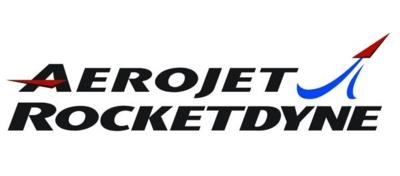Wed, Jun 25, 2014
Company Says '3D Printing' Can Make Engine Construction More Cost Effective
Aerojet Rocketdyne Aerojet recently successfully completed a series of hot-fire tests on a Bantam demonstration engine built entirely with additive manufacturing. The tests were a key step in the development of a more cost-effective engine family for booster, upper-stage and in-space propulsion.

"The demonstration of this engine, made completely with additive manufacturing, is another significant milestone in our path to changing propulsion affordability," said Jay Littles, director of Advanced Launch Propulsion Programs at Aerojet Rocketdyne. "We are not just making a stand-alone chamber or injector derived from traditional design approaches. Rather, we are integrating the full capability of additive manufacturing processes to evolve a proven, reliable, affordable design. We are doing so with technical depth and rigor to meet our unparalleled quality and safety requirements."
The engine, which is normally comprised of dozens of parts, consisted of only three additive-manufactured components: the entire injector and dome assembly; the combustion chamber; and a throat and nozzle section. This particular liquid oxygen/kerosene engine, dubbed "Baby Bantam" (because it is at the lower end of the Bantam engine family thrust range), has a thrust of 5,000 pounds. The Bantam engine family extends up to 200,000 pounds of thrust and can be adapted to use various fuels, including: kerosene, ethanol, methane and storable propellants.
The Bantam engine family is being adapted from the proven design of the Atlas Sustainer engine to take full advantage of additive manufacturing capabilities. The team also was able to reduce total design and manufacturing time from more than a year to a couple of months, reduce the cost of the engine by approximately 65 percent. This engine test was part of a multi-year Aerojet Rocketdyne additive manufacturing development effort that already has demonstrated successful process development, design tool evolution, component fabrication and component hot-fire tests.
More News
Aero Linx: Model Aeronautical Association of Australia MAAA clubs are about fun flying, camaraderie and community. For over 75 years, the MAAA has been Australia’s largest fl>[...]
Touchdown Zone Lighting Two rows of transverse light bars located symmetrically about the runway centerline normally at 100 foot intervals. The basic system extends 3,000 feet alon>[...]
“Discovery and innovation are central to our mission at Virgin Galactic. We’re excited to build on our successful record of facilitating scientific experiments in subor>[...]
How To Get A Story On Aero-TV News/Feature Programming How do I submit a story idea or lead to Aero-TV? If you would like to submit a story idea or lead, please contact Jim Campbel>[...]
Student Pilot Reported That During Rotation, “All Of A Sudden The Back Of The Plane Kicked To The Right..." Analysis: The student pilot reported that during rotation, “>[...]
 ANN's Daily Aero-Linx (05.02.24)
ANN's Daily Aero-Linx (05.02.24) ANN's Daily Aero-Term (05.02.24): Touchdown Zone Lighting
ANN's Daily Aero-Term (05.02.24): Touchdown Zone Lighting Aero-News: Quote of the Day (05.02.24)
Aero-News: Quote of the Day (05.02.24) ANN FAQ: Contributing To Aero-TV
ANN FAQ: Contributing To Aero-TV NTSB Final Report: Cirrus Design Corp SR20
NTSB Final Report: Cirrus Design Corp SR20



